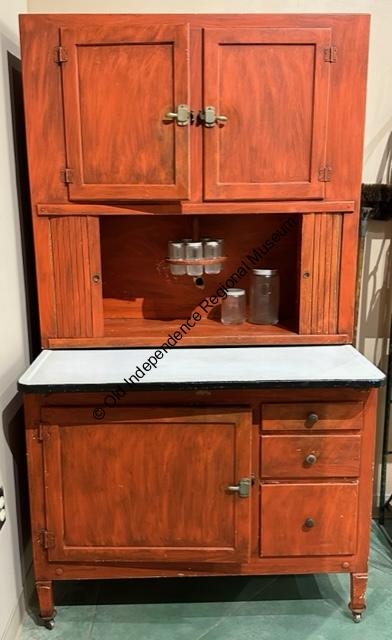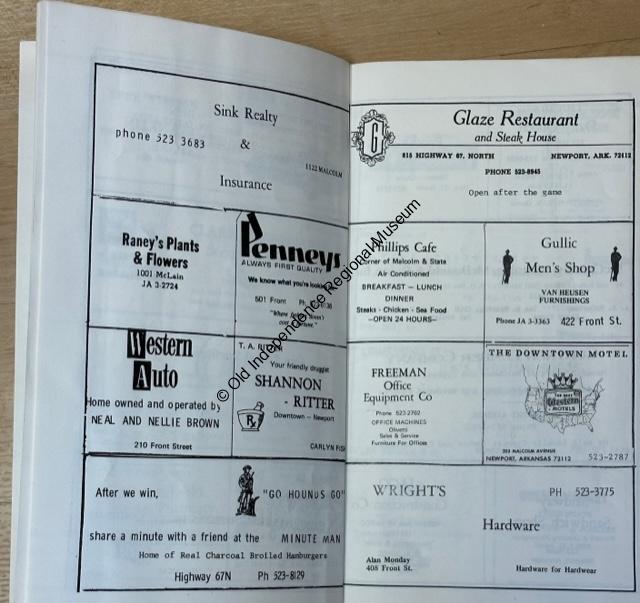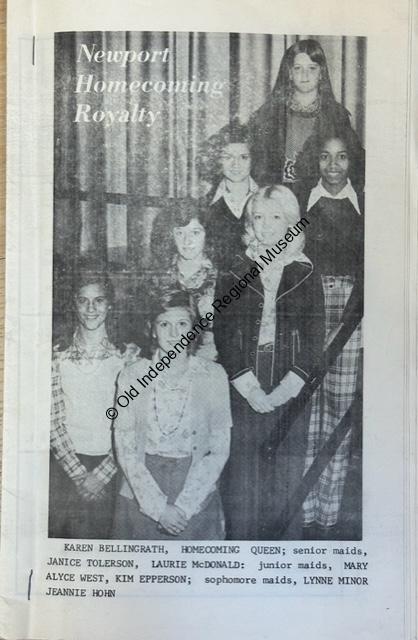Hoosier Cabinets
On October 12, Danny Dozier generously brought by his grandmother’s Hoosier cabinet for our Smithsonian Institution/OIRM “A Taste of Community” exhibit. This beautifully constructed cabinet is even more unique because it was purchased new in downtown Batesville from Crouch Furniture. Close examination of the butterfly closures dates the cabinet somewhere in the 1930s.
The Hoosier Manufacturing Company met a need for many kitchens at the turn of the 20th century: areas to store food within close proximity of a work space. At the time Hoosier cabinets were manufactured (1880s – 1942), most kitchens did not include cabinetry – a fault not remedied until the 1930s. Kitchen owners were also faced with a lack of counter space to prepare meals. The Hoosier cabinet met both these needs in a variety of colors and details. The moniker “Hoosier cabinet” derives from the home state of the company – Indiana. As a brand name, Hoosier cabinets were also manufactured by companies other than The Hoosier Manufacturing Company, with the main gist of the name falling on the state of manufacture. If it came from Indiana, they were known unofficially as Hoosier cabinets.
These cabinets ranged in price from $12.75 to $50.50 in the 1940s, and at their peak one in every ten American homes contained a Hoosier cabinet. As new homes were constructed with ample storage and the Great Depression strangled the economy, the popularity of the Hoosier cabinet diminished. Today, Hoosier cabinets can fetch a pretty penny depending on condition and size.
This cabinet was lovingly “antiqued” by Danny’s mother, who inherited the cabinet from her mother. Danny recalls the cabinet in his family home throughout his life. He and his siblings have graciously loaned the Hoosier cabinet to Old Independence Regional Museum for the duration of our “A Taste of Community” exhibit. Interested in donating or loaning a food-related item to OIRM? Contact us at 793-2121. Interested in seeing the exhibit? Visit us beginning January 2024. We will see you at the museum!






